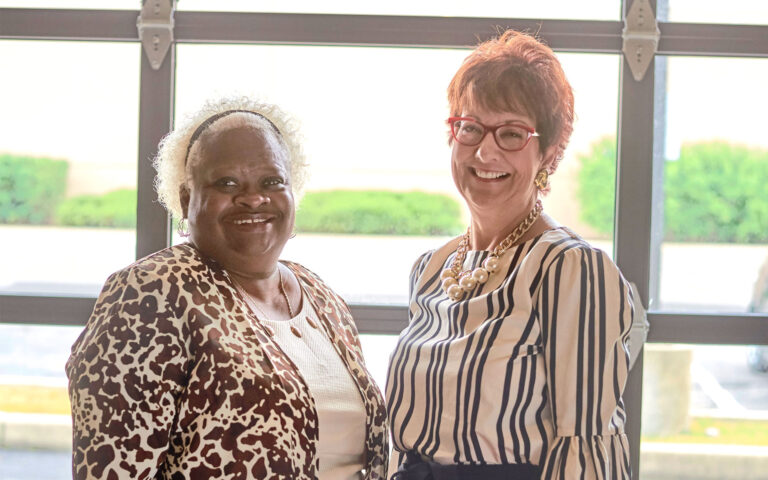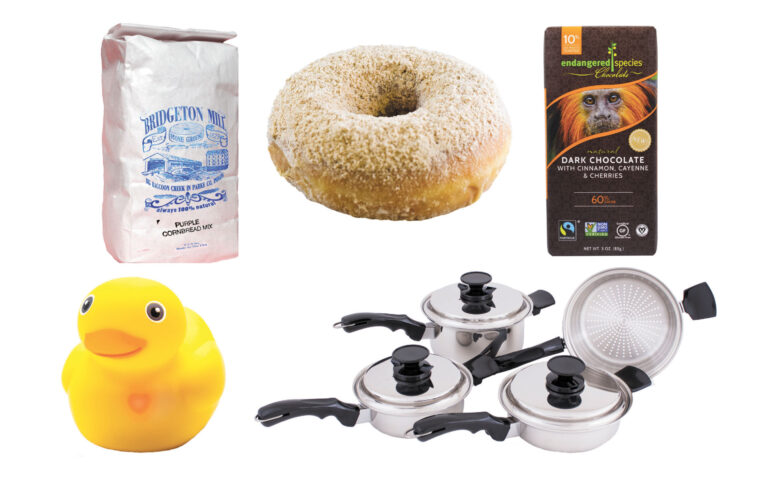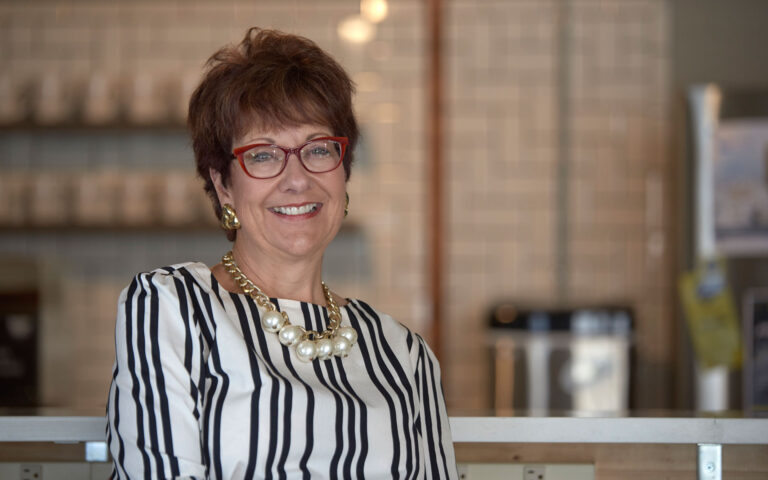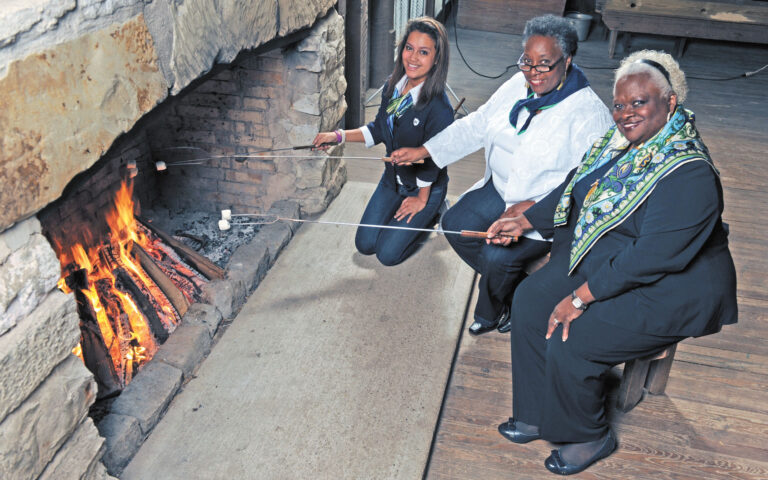By Ebony Marie Chappel
This spring, Deborah Hearn Smith, CEO of Girl Scouts of Central Indiana, announced that she will be retiring at the end of 2017. During her tenure, which spans nearly 50 years, Smith has served in various capacities within the Girl Scouts organization.
In 1970, Smith earned a Bachelor of Science in political science from Kentucky State University, after which she became a field executive with the Girl Scouts organization. Two years later she was promoted to director of camping services and remained in that role until 1991, when she was named director of facilities and technology. In 2001, she rose to the office of CEO of the Girl Scouts Hoosier Capital Council, and in 2007 when five of the state’s Scouts councils merged, she was named CEO of Girl Scouts of Central Indiana. Her Girl Scouts journey has spanned most of her lifetime, and she is estimated to have impacted the lives of more than 1 million girls. Prior to becoming an executive, she participated as a young scout herself, building lifelong bonds and connections.
In an interview with the Indianapolis Recorder, Smith said: “I joined Girl Scouts because my mother wanted me to be engaged in activities that she thought would broaden my horizons and develop me as a whole person. She was dedicated to the fact that as an African-American girl growing up in the ’50s and ’60s, that I not see my horizons as limited. And she found a fit in the core mission in Girl Scouts to help realize her dreams for me.”
Recently, IMBM caught up with Smith to reflect on her career and thoughts on the issues that continue to affect women and girls.
IMBM: You’ve been with the Girl Scouts nearly your entire life. As a professional, how were you able to continuously reinvent yourself within the organization over the years?
Smith: I think over time, changes in the world, in Indianapolis, in the lives of girls and in education meant that I had to adapt and the organization needed to adapt or we wouldn’t be relevant. It was really studying trends, demographics and going back to school to continue academic learning as well as practical experience. Within Girl Scouting, we go from child development, to property development, to technology so I’ve been in various areas over the years. I haven’t just done one thing forever.
With doing those different things, was it your intention to constantly seek out new opportunities or would you attribute your growth to some other factors?
I get bored easily, believe it or not. I’m always seeking to do things differently and to learn new things. It’s just the nature of who I am. I’m also the type of person who likes to see things get started. I’m not going to stay on one track if that track isn’t succeeding. I’m not afraid to take on a new challenge or change things. I feel like you’ve already failed if you’re not doing something new and that’s basically who I am. I’m a learner, I’m a reader and I just enjoy that. I also enjoy people, and even though you may have a situation that looks the same, the people are what makes it different. I’m always trying to meet the needs of the people around me, which means I’m very sensitive to what’s going on.
What do you feel have been some of your biggest challenges throughout your career?
I think that it’s a challenge to relate to a broad spectrum of society. Since the mission (of the Girl Scouts) is to serve all girls, it’s critical to understand what parents want for their girls and to understand the values of families as they differ. As much as we would like to make generalizations, families have their own uniqueness. We have to understand that and not try to legislate and rule what everyone needs. As I work with thousands of different people, I’ve had to work very hard to understand their perspectives and goals and not try to impose my goals on them. That’s very challenging, demanding and it can drain you. I may think every girl should go to college, and I may be working with a family that would see success if she just makes it through high school, and I need to help that family be successful. I may want to help her go on to college, but I cannot disavow the family’s values.
When you look back on the accomplishments you’ve made and the lives you’ve touched through your work, what are some of those moments that make you proud?
Recently, we had a girls awards breakfast. We had capacity for 1,400 people (at the event) but we were fully booked; we were past that. When I can look out and see a thousand girls who have achieved the high standards that we set for them, I am really pleased. That number has increased over the last several years. I can look out and know, no matter what the press is saying, the girls of central Indiana are doing well, and any small part I’ve had in that is what I’m most proud of.
When you look at the state of girls and women today, what do you think is missing?
I can tell you that my biggest disappointment is that women have yet to grasp their own power and their own leadership. Far too often, women put limits on themselves. They don’t see themselves as leaders; they don’t acknowledge their skills. In this day, I didn’t think we’d still be there. So, a lot of the work we do is to have mothers and women understand their value, because to impart that onto girls, we have to have it as women, and we don’t always. That, I find troubling. I also find it troubling that men in our community have not stepped up to the plate at the same level for girls as they have boys. Our girls need our support, and I think as a community, we need to really wrap ourselves around what women and young girls need. It’s more than whether or not they can read in third grade. It’s self-concept and self-perception, a sense of who they are that’s really critical, and that’s being lost in the discussion.
A great portion of that erasure, maltreatment and neglect can be attributed to sexism and, in the case of women of color, racism. What has been your own personal experience with sexism and racism?
I’m a Black woman in Indiana…of course! I have definitely been exposed to both. I have to still understand, that when I walk into the room, I walk in as a Black woman. There’s no way not to, and I know that in some circles, that is not viewed as a positive. What we have to teach our girls is that when I enter into the room, I enter knowing that I am capable, I am equal and I can do it. I don’t walk in there thinking I can’t. Whether or not you think I can is not as critical as the (necessity of) me walking into the room with that confidence. We talk about girls needing courage, character and confidence, and I walk in the room with all three. I know there are places where my gender or my race may not be viewed in a positive way, but I cannot allow that to stop me.
Deb is… Reflections from friends and colleagues
“As a parent of a son with significant disabilities, (Smith) worked to promote the importance of ethnic and cultural diversity and the inclusion of people with disabilities as active, participating members of their communities. Deborah served on the Cultural Inclusion Committee and assisted the Council to develop and promote a Girl Scout badge focusing on disability inclusion for the Hoosier Capital Council.”
Christine Dahlberg, executive director of the Governor’s Council for People with Disabilities
“It’s very easy for me to say great things about Deb Hearn Smith because I’ve known her for at least 22 years, and she’s always been a great mentor. She’s a thought leader and a great problem solver. She shares her knowledge and her resources with you. She shares her thoughts about things with you and she does it in a very thoughtful, respectful way. I think she has been a great mom, friend and member of the Circle City Links as well as a leader in the community.”
Debra Simmons Wilson, president of Circle City Chapter of the Links, Inc.
“Deb’s passion for the Indiana Deaf Camp is a direct result of her own deaf son, Jason, having come to our camp for many years. Her experience with (Girl Scouts) made her an exceptionally valuable asset to our board as she guided us through policies and procedures she was totally familiar with. Deb’s knowledge, compassion, diplomacy and her (care) for all other people are just a few in a long list of attributes.”
Barbi Stenacker, executive director of the Indiana Deaf Camp Foundation
“Over the years, I have been so impressed with her knowledge base. What she knows about the needs of our community, particularly for women and girls, just amazes me. Due to her, Girl Scouts is (very connected) to our funders and female leaders in Central Indiana and across the state. When I go with her to meetings in Nashville, I’m impressed at how well respected she is by her colleagues across the country.”
Diana Sullivan, board chair of the Girl Scouts of Central Indiana
















